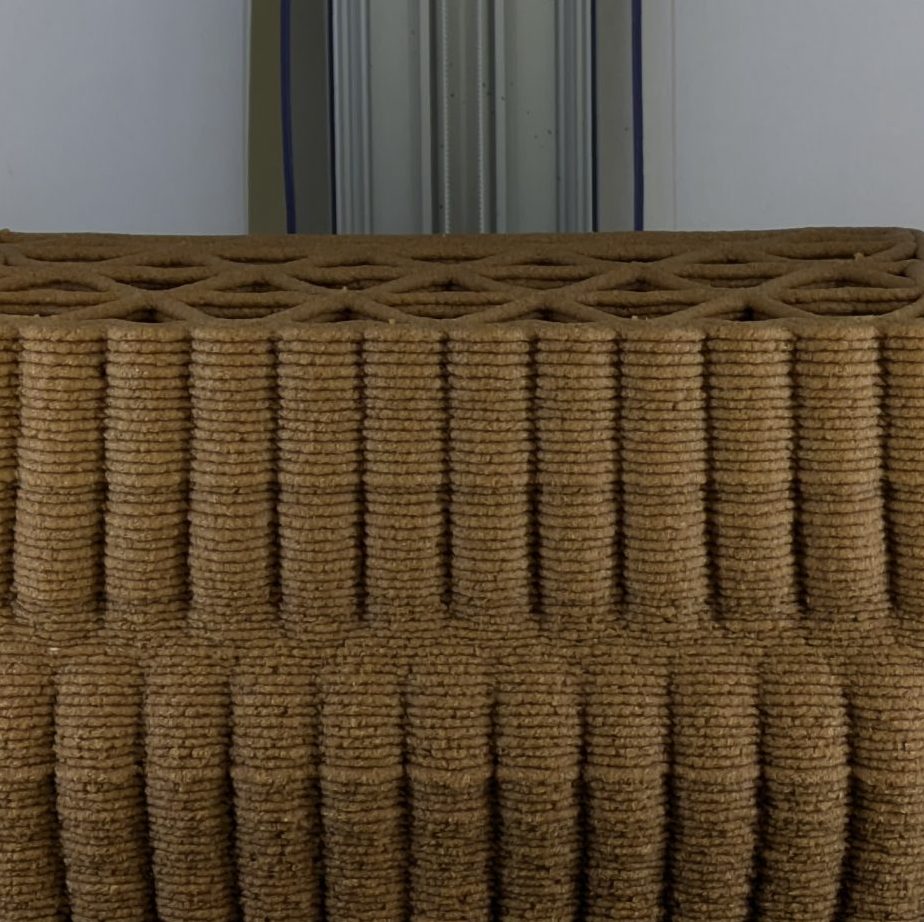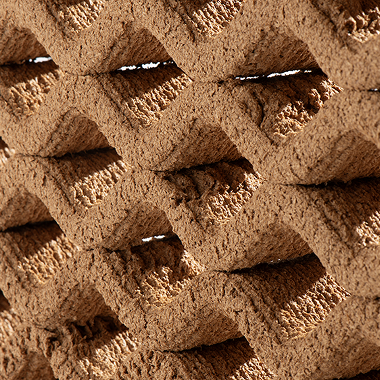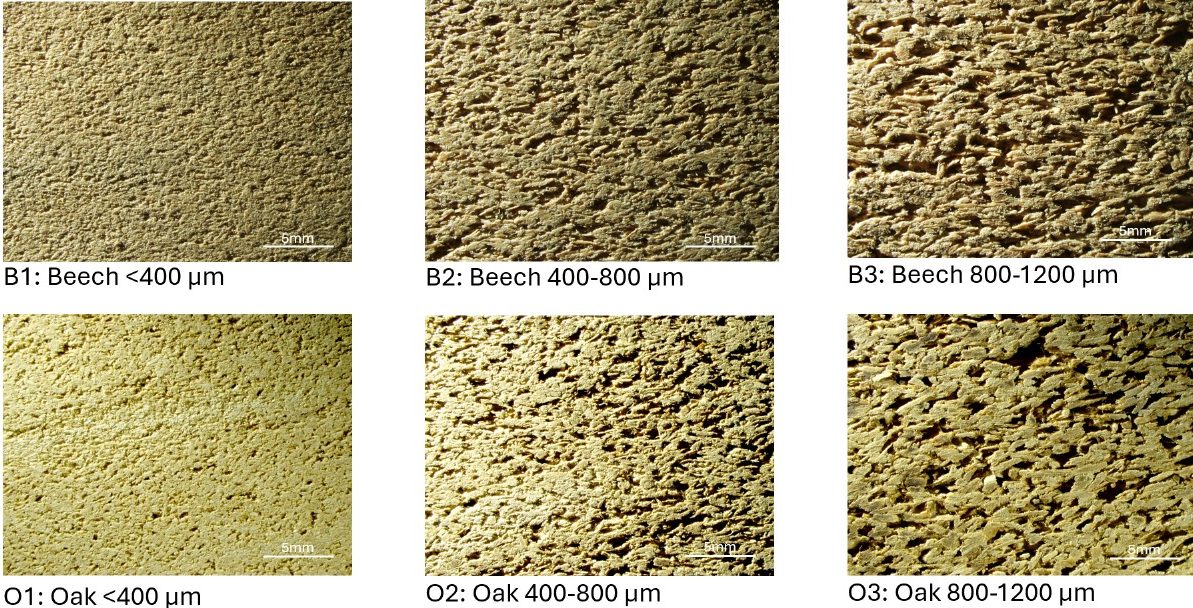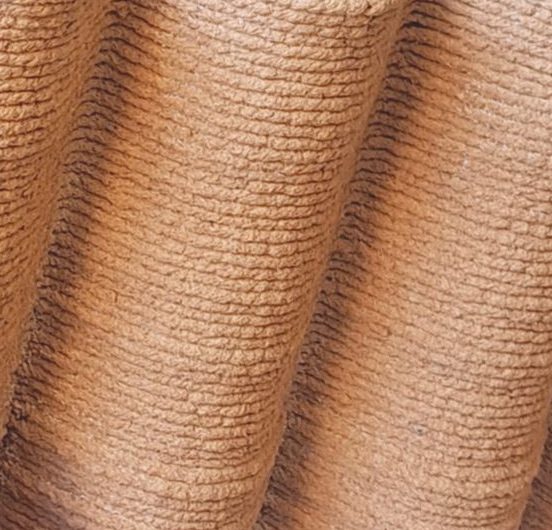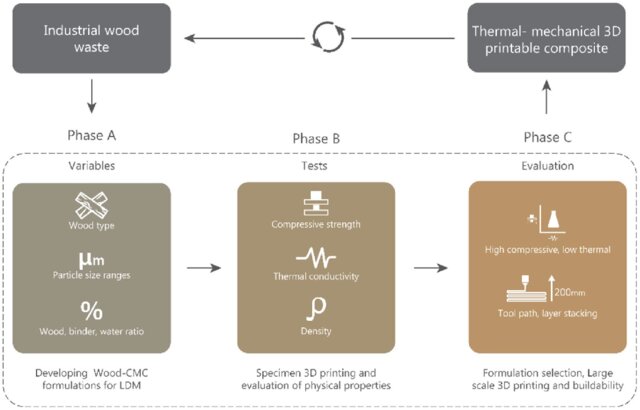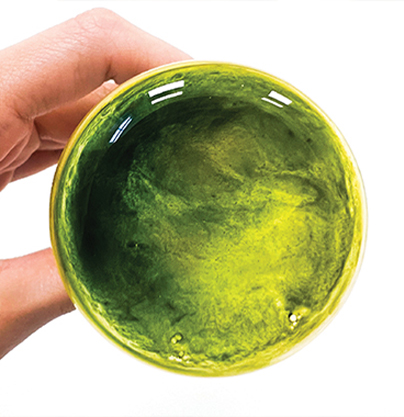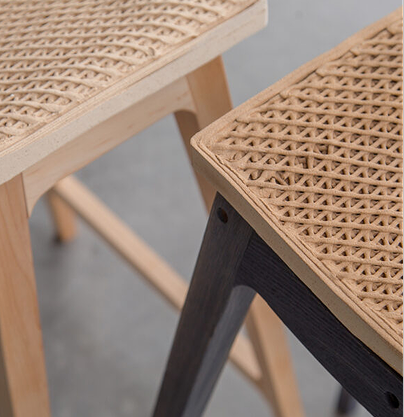ThermaWood explores a scalable pathway for transforming wood waste into high-performance, 3D-printed building components using Liquid Deposition Modeling (LDM) with a cellulose-based binder and water. Addressing the construction industry’s significant environmental impact, this research redefines wood waste as a renewable resource for sustainable, energy-efficient architecture. It reveals how fundamental parameters, wood species, particle size, and binder ratio, govern the interrelation between mechanical strength, thermal insulation, and surface tactility. The process achieves print stability at high water content, enabling large-scale fabrication without molds and advancing beyond specimen-scale experiments toward adjustable geometries and controlled porosity. Together, these insights establish a new design framework in which circular biocomposites become active, tunable systems, unlocking lightweight, resource-efficient, and customizable building blocks for sustainable construction.
